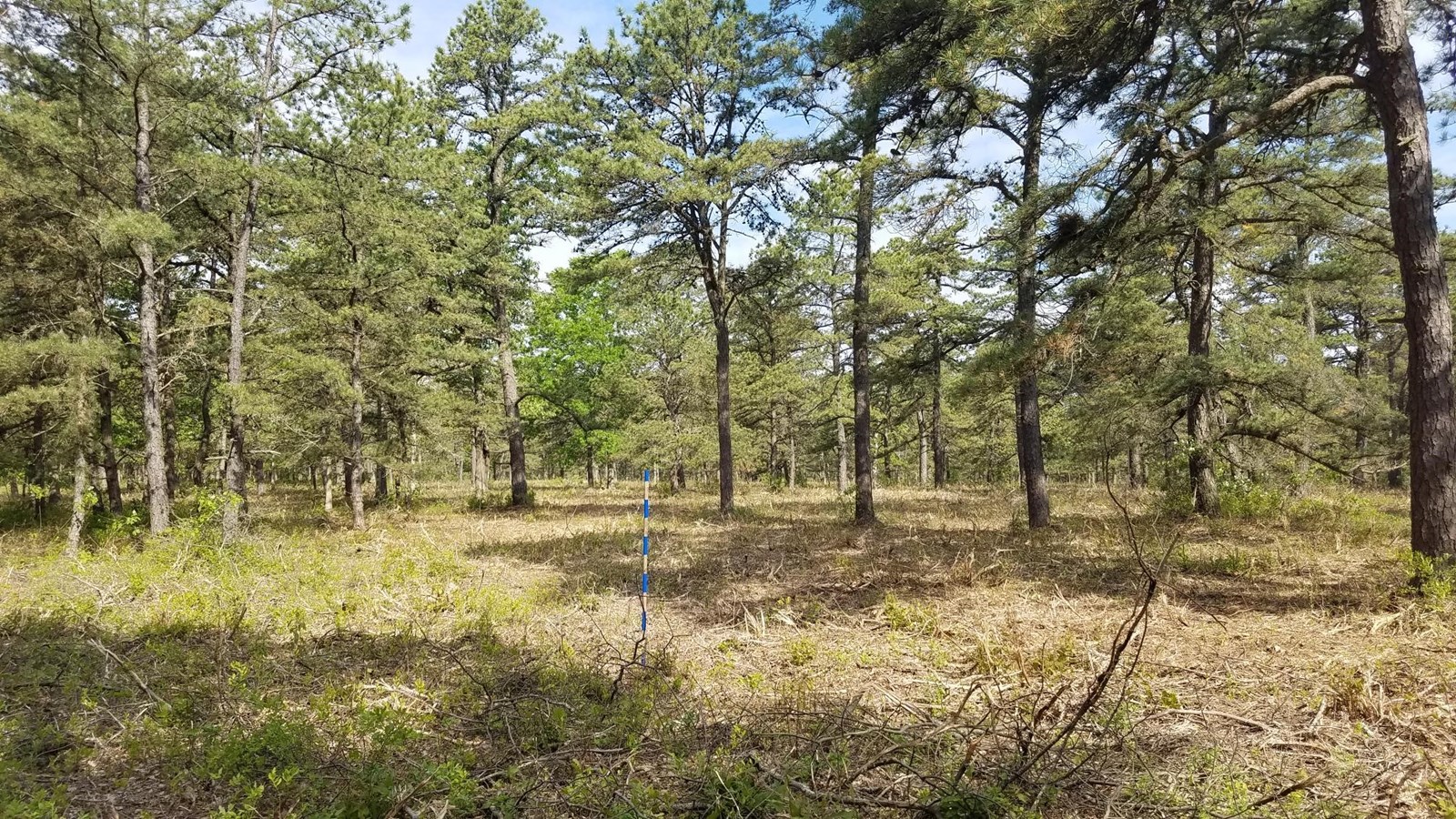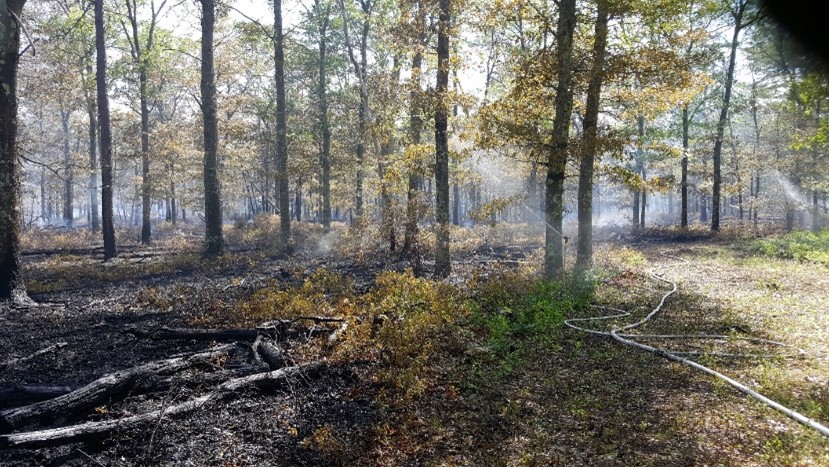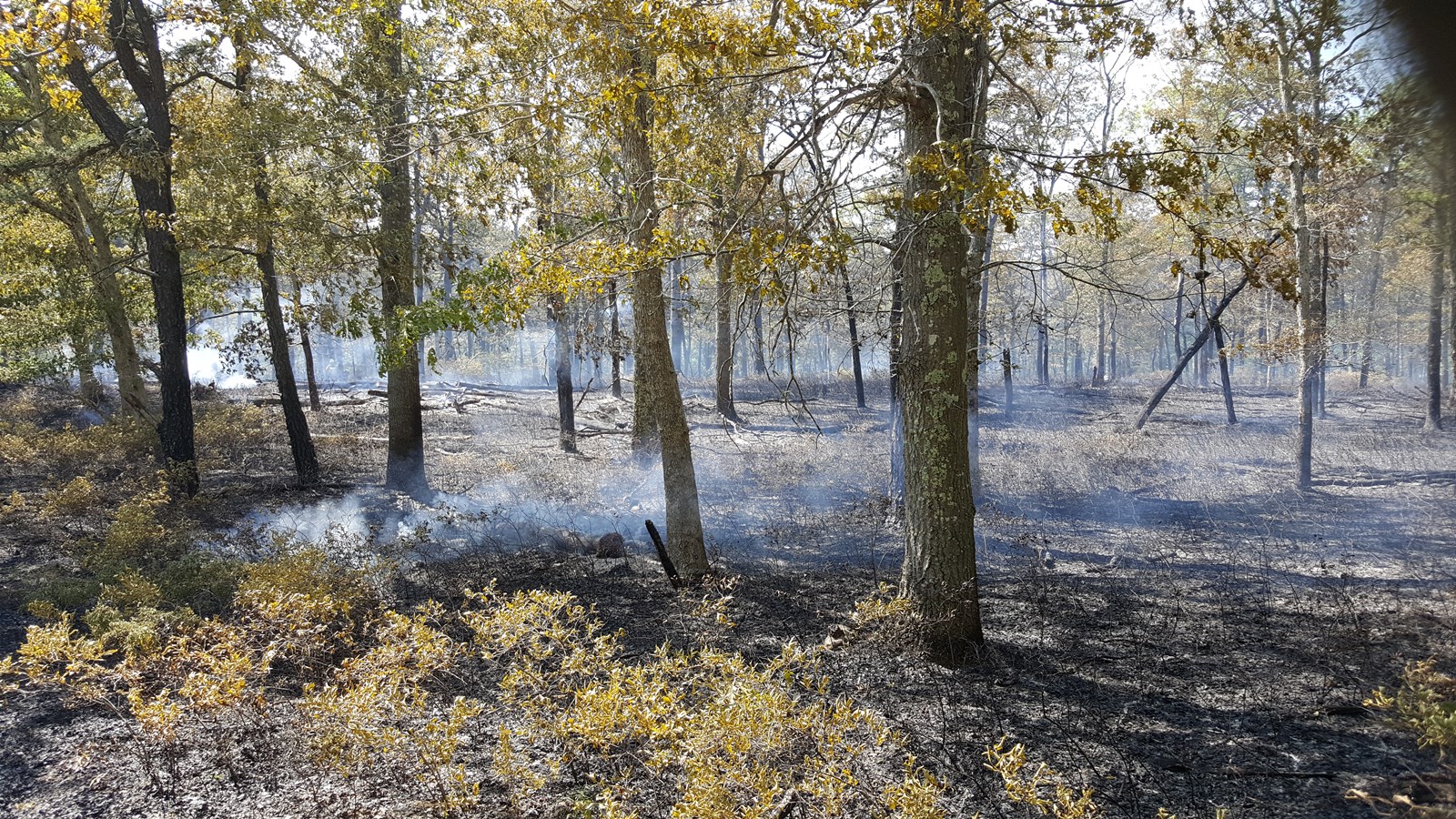What to Expect
Whether you are a resident or visitor to the Central Pine Barrens, below is a guide to help you know what to expect when prescribed fire operations are occurring.
Project Areas
Prescribed fire project areas will be based on the priority structure outlined in the Comprehensive Prescribed Fire Management Plan and will exist throughout the Central Pine Barrens. The early focus of the program will be on neighborhoods and communities most at risk for wildfire to best increase the resistance and resiliency of these communities to fire, while concurrently meeting ecological objectives. A web map is being maintained in which the current areas planned for prescribed fire are delineated in addition to some potential year or season target ranges for implementation. New areas will be added to the map as additional plans and priority areas are developed through time.
The Central Pine Barrens prescribed fire projects web map coming soon.
Pre-fire Vegetation Treatment
In some areas, management work may be required to prepare a site to meet prescribed fire objectives safely before implementation of fire. These pre-treatments will consist of installing or improving fire breaks and access points to allow improved holding (control) and ingress and egress at the site. Additionally, other work may be conducted as needed to be more effective at meeting prescribed fire management objectives, which could include mowing of shrubs, thinning of dense tree stands, redistributing some vegetative materials on site and other techniques.
Technical Operations, Training and Equipment
Prescribed fire implementation requires practitioners that have undergone rigorous federal level coursework and training in wildland fire and prescribed fire operations.

In addition to staff skill and expertise, specialized equipment is employed when conducting prescribed fire. Wildland fire engines consisting of both trucks and utility terrain vehicles outfitted with water tanks, pumps and hoses are used to conduct a prescribed fire in the confines of the treatment area. Supplementary water holding tanks and trailers, pumps, hose lays and sprinkler systems are used in some cases to allow for increased availability of water on the fire line as needed. Additionally, staff employ a wide variety of hand tools and outdoor power equipment as needed when working on a prescribed fire to handle a variety of fire holding and ignition needs.
Size
The size of individual prescribed fires will vary based on resources available, fuel types, and fuel loads, as well as fire objectives. In the initial restoration phase of prescribed fire operations, it is anticipated that individual fires will be small and patchy, not burning the entire area, and ranging from potentially two to seven acres. These initial prescribed fires are largely focused on consuming built up fuels and smaller fire sizes help to limit smoke production, increase safety and increase the likelihood of meeting objectives. Over time, after initial fuel reduction objectives have been met in a particular area, larger fire acreages may be employed in a maintenance phase that transitions to routine upkeep to keep fuel levels low.

Seasons
Prescribed fires are implemented in various seasons depending on objectives. Prescribed fire is restricted during certain times of year and locations due to specific wildlife concerns or life stages in particular habitat types. As far as general seasonality, the two primary time frames when a higher frequency of prescribed fires are likely to occur in the Central Pine Barrens are late winter to spring (February through May) as well as late summer to fall (August through November). Although operations are focused during these burn seasons, certain objectives, such as fuel reduction, can be met through burning during the winter dormant season.
Smoke Management
Smoke generation is an inherent part of any prescribed fire operation. However, there are various mitigating procedures that can be implemented to reduce the amount of smoke generated during a prescribed burn. Prescribed fire operational plans include several techniques to reduce smoke density and production over the course of a prescribed fire. Some of these techniques relate to firing techniques and chosen patterns used to ignite fuels in different locations during a burn. Other techniques include burning with fuel moisture
 content that either encourages or restricts certain fuel types that would result in high smoke development from being involved during the prescribed fires. Atmospheric conditions are also specified, as they influence the ability for smoke to rise and rapidly dissipate in the atmosphere, granting the ability to reduce the density and concentration of smoke quickly. Most prescribed fires will employ a patch burning technique, rather than a broadcast uniform burn, which creates pulses of smoke rather than a continuous thick column or sheet of smoke.
content that either encourages or restricts certain fuel types that would result in high smoke development from being involved during the prescribed fires. Atmospheric conditions are also specified, as they influence the ability for smoke to rise and rapidly dissipate in the atmosphere, granting the ability to reduce the density and concentration of smoke quickly. Most prescribed fires will employ a patch burning technique, rather than a broadcast uniform burn, which creates pulses of smoke rather than a continuous thick column or sheet of smoke.
Smoke mitigation measures will be employed to reduce the production of smoke and facilitate better dispersal during a prescribed fire operation, but fire will still result in some smoke development with the potential to create short-term impacts. Smoke should be anticipated, but the impacts will likely be minor and will only exist very temporarily in the immediate vicinity of the burn areas.
Furthermore, the use of prescribed fire provides an improvement to public health and safety related to smoke exposure versus smoke exposure that occurs during a wildfire. Prescribed fire operations are implemented to consume fuels under conditions allowing control of smoke generation and concentration in consideration of public health and safety. Conversely a wildfire significantly increases human exposure to smoke, being an unplanned and uncontrolled outbreak of fire that results in the production of thick concentrated smoke with high particulate matter for a long duration. Therefore, it is of greater benefit for public health and safety to utilize prescribed fire as a means to reduce and mitigate as much as possible the public safety concerns associated with wildfire and smoke generation.
Roads
There may be limited smoke impacts to roadways as well as minor, temporary restrictions in visibility along roadways. Signage will be placed on roadways in the vicinity of the burn area noting the potential for smoke-related visibility impacts to alert motorists to exercise additional caution when traveling in these areas during prescribed fire operations.
To learn more about the prescribed fire management program follow our Prescribed Fire Facebook page, email prescribedfire@pb.state.ny.us or call (631) 288-1079.